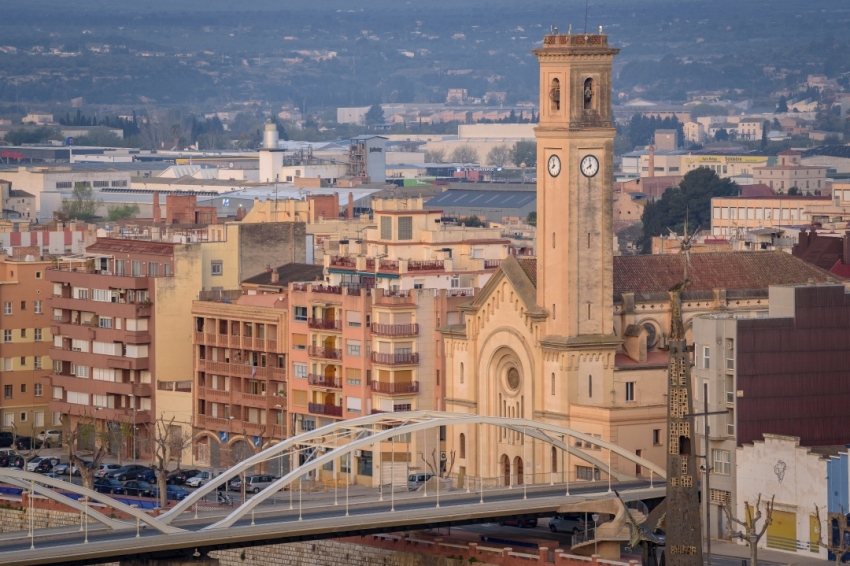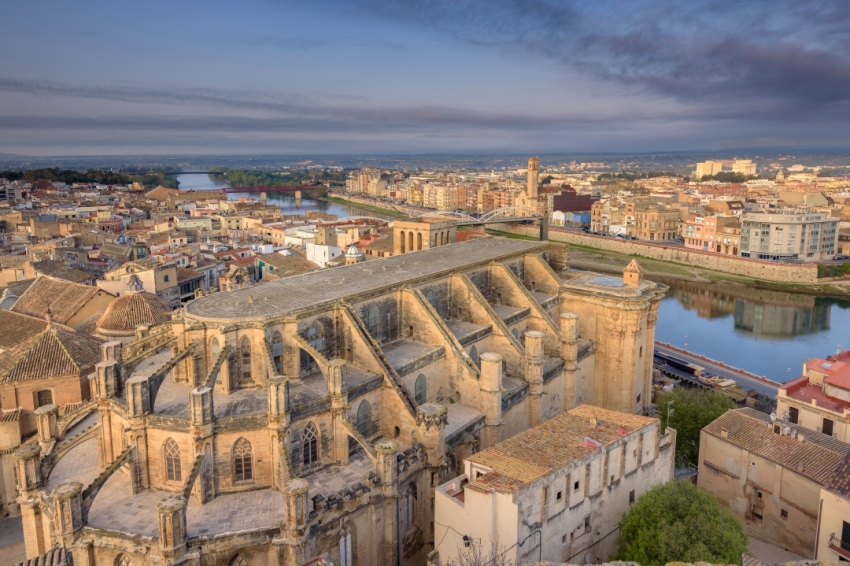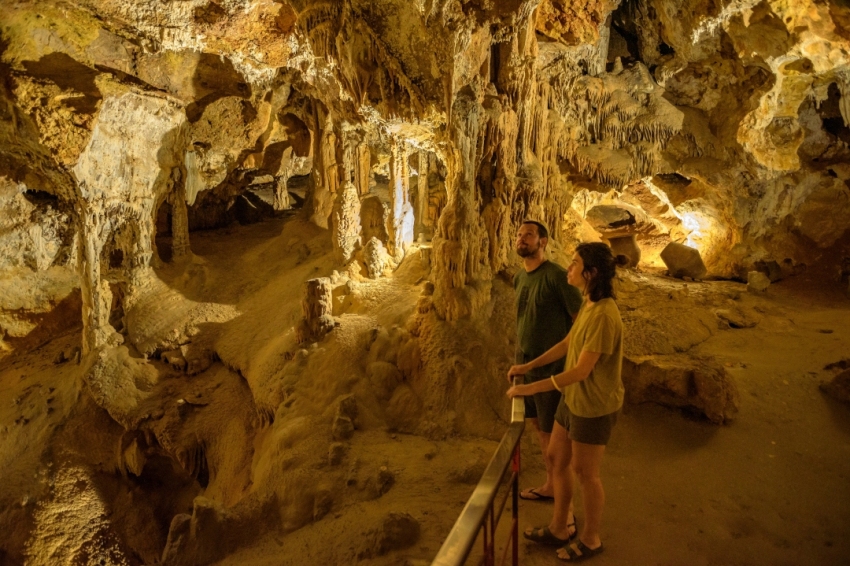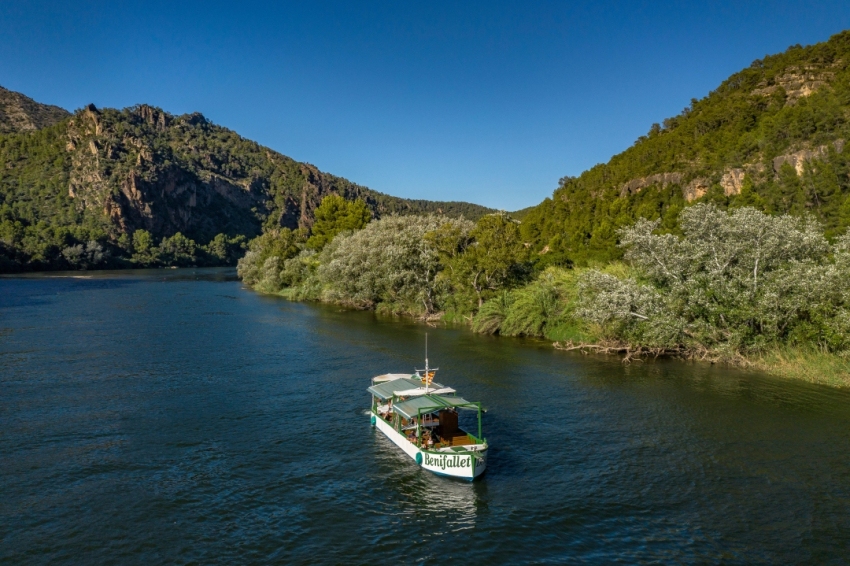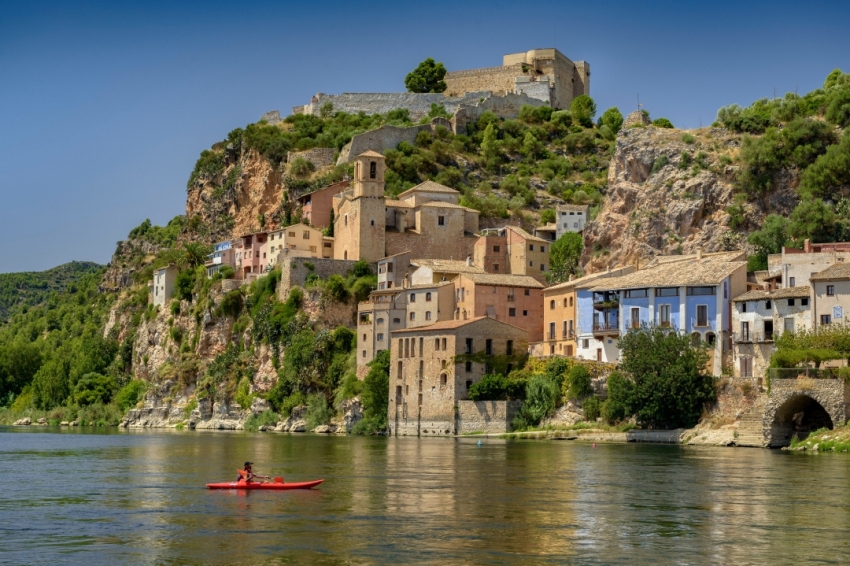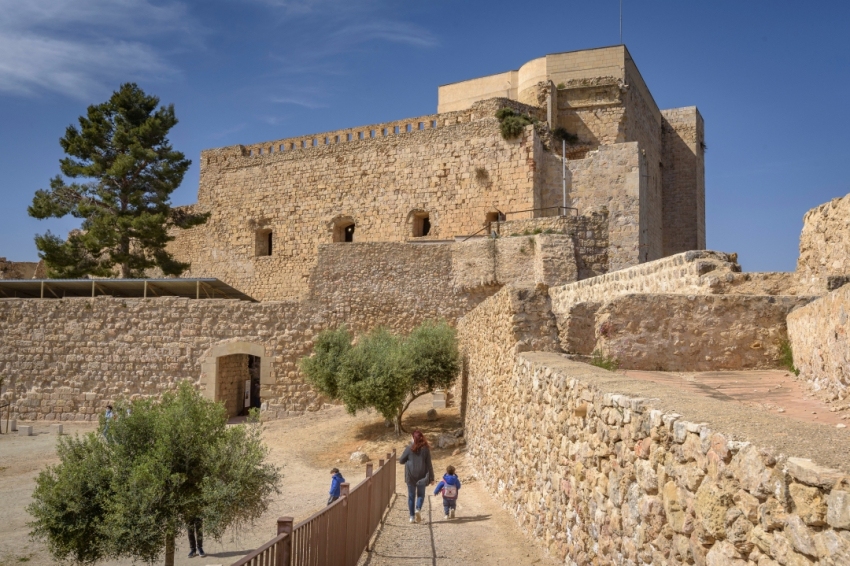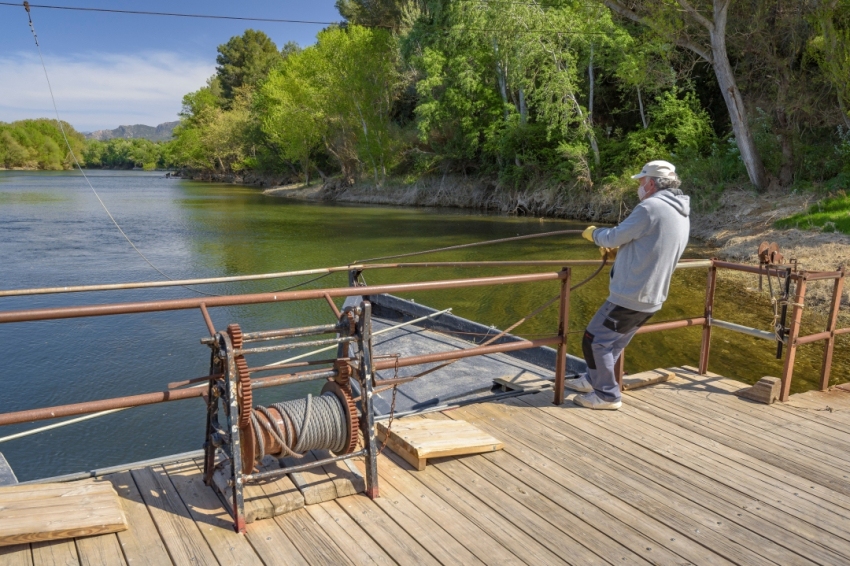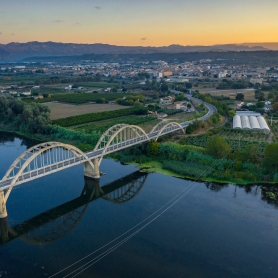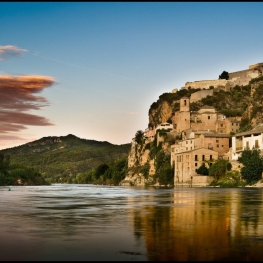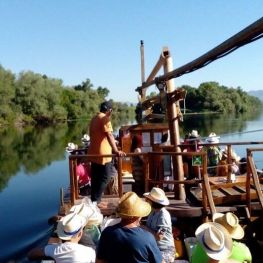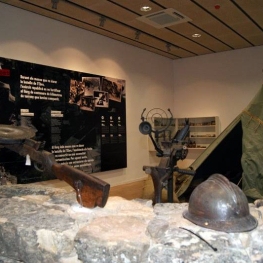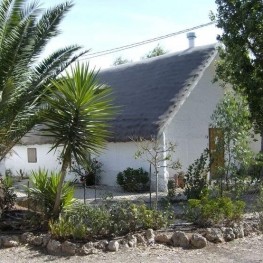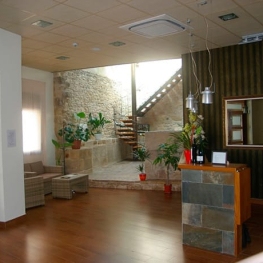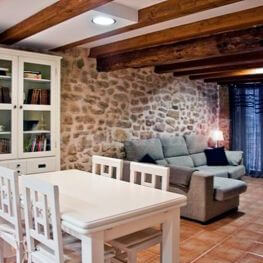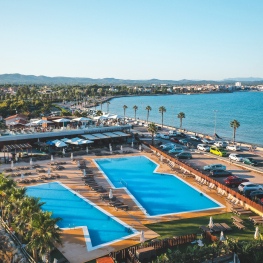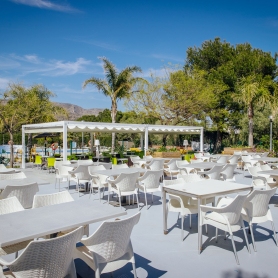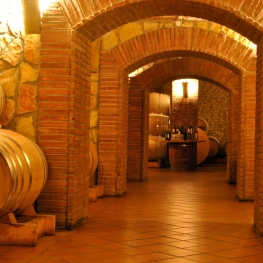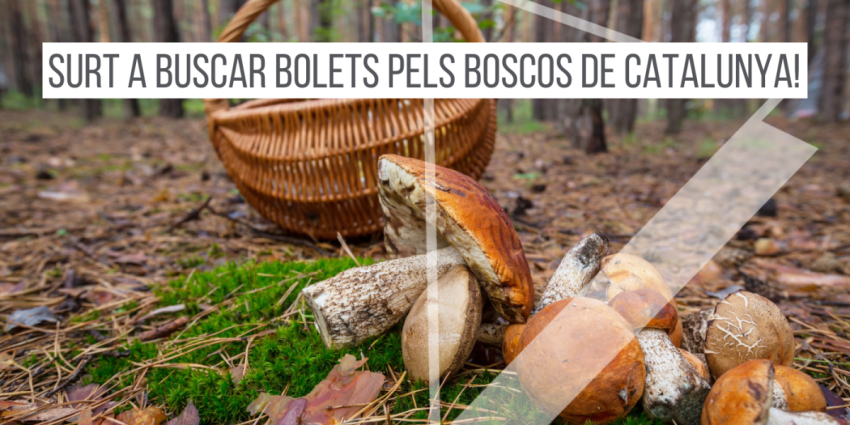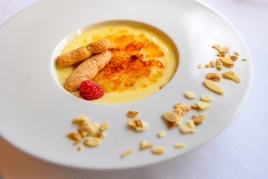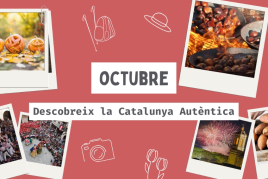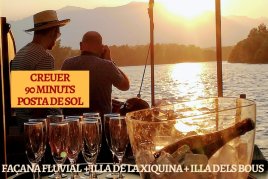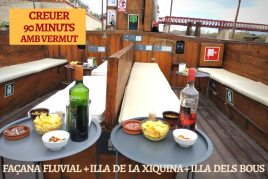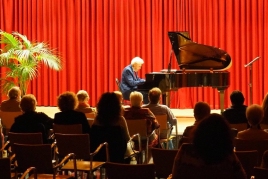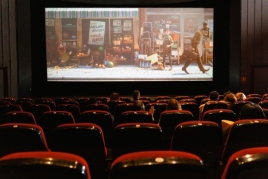Water and life through the Ebro by electric car
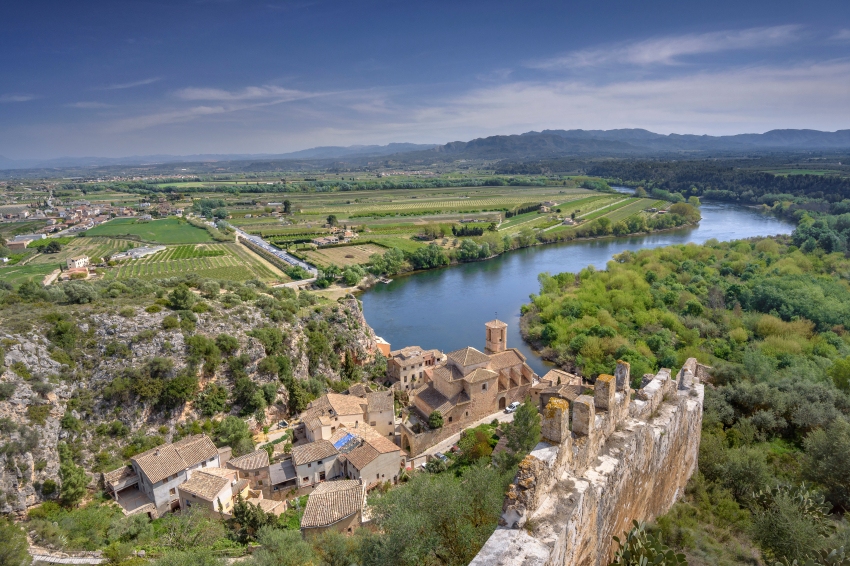
![]()
This route is designed to be done by electric vehicle, although it can be done with any other car. Along the route we will suggest municipalities that have charging points and places of interest to visit while we charge batteries.
Electric cars are a good way to decarbonise road transport These vehicles do not emit greenhouse gases and do not need fossil fuels to run, which which makes them a viable option to help reduce our CO₂ footprint.The constant improvement in the technology of these cars makes them increasingly efficient and ecological.
Consult also the recommendations when traveling by electric car.
4
Number of sections
44
Total kilometers
Also consult the recommendations when traveling by electric car.
The name of the Ebro River comes from the Latin hiberus or iberus, which comes from the word íbero, a word that the Iberian peoples associated with water. And water is the main element of a route that runs through one of the last stretches of the largest river on the peninsula.
With a 930-kilometre route, the Ebro River is born in the Cantabrian Mountains and flows into the Mediterranean Sea, specifically in a unique and spectacular setting: the Ebro Delta.
The largest wetland in Catalonia is a protected space where water has been carrying sediments for thousands of years. The river gives its name to the land and this is its soul.
In the Ebro delta, man and nature merge to create a rich natural landscape where horizontality and life predominate, since rice fields, reed beds, saline soils, beaches and an enormous biological diversity headed by the different types of birds.
River navigation on the Ebro River allows visitors to enjoy the river in multiple ways, such as with a llagut (an old wooden boat), with a cruise ship, a motor boat or with a cayuco if you feel like doing sports while you enjoy the water, the land, the plants and the animals. The magic of the Ebro captivates locals and strangers, since the immensity of the river makes humans part of an idyllic landscape without equal in the rest of the country.
But in this case we will not board any lute, but rather we will do so in a vehicle to apply the concept of sustainable mobility in this natural and virgin territory.
Below we propose an itinerary to enjoy the last stretch of the Ebro River, a territory of meanders, river islands, mountains, irrigated plants and sweet fruit crops that since ancient times has been inhabited by a multitude of civilizations.
The route will take us from the great capital of the Ebro lands, Tortosa, to small towns with a special charm such as Tivenys, Aldover, Xerta, Benifallet, Rasquera or Miravet.
Tortosa, the city of the Ebro
Tortosa will be the starting point for our electric car. Crossed by the Ebro River, the capital of Baix Ebre is surrounded by the Els Ports massif and the Cardó mountains. The city, with more than 30,000 inhabitants and an area of 218.5 km2, is an important historical, cultural, religious and tourist center of the Ebro lands.
Declared as a historical-artistic complex, Tortosa was conquered by Muslims, Aragonese, Castilians and French. The cultural richness adopted from the mix of cultures means that circulating through the streets of the city you can breathe an air of Moorish, Renaissance, Baroque and Judaic currents.
Undoubtedly, the first stop on the route will be the Tortosa Cathedral, an imposing Gothic temple located at the foot of the Ebro River. Santa Maria de Tortosa was built in 1757 on top of a Roman forum, a mosque and a Romanesque cathedral. Highlights include its central nave, the cloister and the chapel of the Virgin of Cinta. Marked by its grandeur and luxurious decoration, you can admire numerous frescoes and materials. Furthermore, in the cathedral you can also find the tomb of Lluís de Tena, bishop of Tortosa and president of the Generalitat of Catalonia from 1617 to 1620.
After the cathedral, a visit to the Castell de la Suda is also mandatory, since it is an imposing complex that captivates the visitor. This is one of the main historical monuments of the city of Tortosa. Its walls and fortifications are one of the treasures of the capital of Baix Ebre and occupy the central hill of the ancient city. From there it rises high above the rest of the buildings and becomes a magnificent viewpoint of the city.
Leaving the castle behind, we find the neighborhood and the monastery of Santa Clara, a building protected as a cultural asset of local interest. Located in the northeast next to the 14th century wall, it has its origins in the temple of Sant Miquel, of the Templar order. The pointed arches are preserved and its magnificent cloister, dating from the 13th century, stands out.
Finally, another piece of history of the city that must be visited and known is the Portal del Romeu, one of the most touristic places in Tortosa. The construction is located in the old town and is the only one of the interior portals of medieval Tortosa that is still preserved today. Of the Portal del Romeu, in addition to its architecture, its symbolism also stands out, with two reliefs of Saint James and Saint Christopher made in the 18th century.
![]()
Next stop
12.5 KM (Tivenys)
Tivenys and the immensity of Assut
Marveled by the monumental wealth of Tortosa, we leave the capital along the T-301 secondary road and travel 12.5 kilometers north, always parallel to the Ebro River, to stop in the municipality of Tivenys after about 15 minutes of travel.
Tivenys is a small and charming town located on the left bank of the Ebro River, it has an area of 53.5 km² and a population of 800 inhabitants. The term has the shape of a large closed cirque and is crowned by the tops of the Cardó mountains.
In Tivenys it is essential to visit the Assut area, an impressive hydraulic work 375 meters long and 7 meters high. The Assut has the objective of raising the water level to channel it to irrigation ditches in the area. Tivenys and the towns in the area have a life closely related to the river.
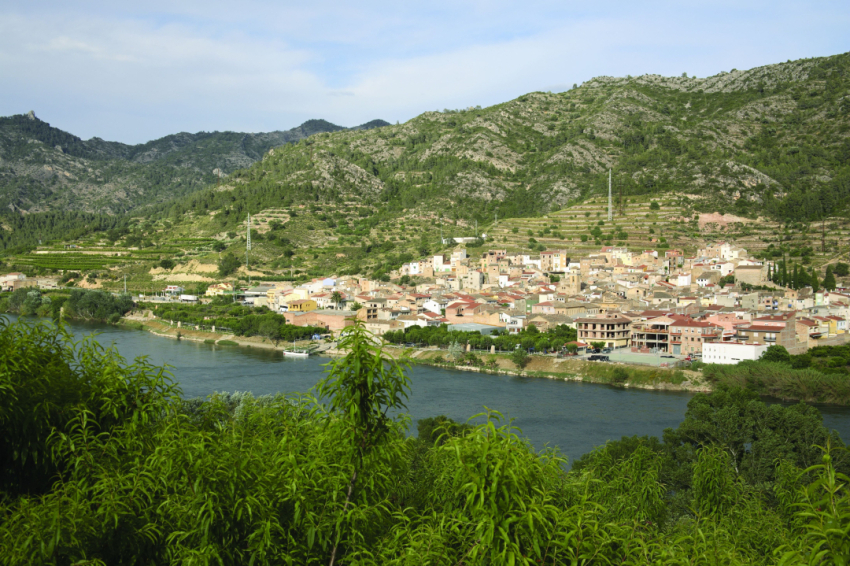
With the tranquility that characterizes the area, the flora, fauna and the singing of birds will accompany us in a spectacular view that will continue along the river beach and the old flour mill.
In addition, we can also enjoy a leisure area ideal for children and a fishing interpretation center.
Next to the Assut de Tivenys are the remains of the Farinera, a 19th century flour factory where the left canal of the Ebro passes beneath. The industry took advantage of the water flow of the canal to move the wheels that carved the wheat. which later became flour. The flour mill is just an intact sample of the town's industrial past and the life that the river gives to all those who live in its bed.
![]()
Next stop
12 KM (Benifallet)
Benifallet, land and water
Without leaving the north direction of the Ebro River, after 19 minutes by car, the T-301 road will take us towards Benifallet. This is a charming little town, very similar to Tivenys. It has an area of 62.61 km² and a population of 700 inhabitants. It is located at the northernmost end of the Baix Ebre region, on the border with the Terra Alta and Ribera d'Ebre regions.
The municipality of Benifallet offers a wide range of tourist proposals to enjoy and get to know its people, the river and life. But the most prominent is underground.
In 2021, the Benifallet Caves were declared a cultural asset of local interest by the Baix Ebre Regional Council. The Cova Meravelles and the Cova del Dos are two cavities open to the public where guided tours are offered. Inside you can see remains from the Neolithic, from the Battle of the Ebro and also some spectacular rock formations that have been created over the years due to the slow drip of infiltration waters.
And leaving the interior of the earth, we return to the most magical liquid of the Ebro lands, water. In Benifallet we can climb a lute that is intended to be a replica of the ancient boats that circulated the Ebro and transported goods up and down. The Llagut de Benifallet has a capacity for 47 passengers and has a route that circulates to the crossroads of the Baix Ebre, Terra Alta and Ribera d'Ebre regions.
In addition to land and water, Benifallet offers us other tourist proposals to remember its history such as the archaeological sites of Aldovesta, the Castellot de la Roca Roja or the Cadell farmhouse.
It is also worth highlighting the beauty of its historic center, where buildings from different periods converge.
![]()
Next stop
19,6 KM (Miravet)
![]()
Need to recharge?
Benifallet
Rasquera (10.4 km away)
And meanwhile: in Rasquera we can find different routes to do on foot that will allow us to discover an emblematic space full of landscapes of great interest. If we don't like walking too much, we can visit the old town, where there are samples of its medieval past.
Miravet and its Templar past
The last point on our route will be the town of Miravet. 19.6 kilometers from Benifallet, following the N-230C and T-324 highway, is a small municipality in the Ribera d'Ebre region. With an area of 32.41 km² and a population of 700 inhabitants, Miravet is dominated from above by an ancient Templar fortress from the 12th century.
The so-called Miravet Castle is in a great state of conservation and you can visit its walls and different rooms such as stables, cistern, kitchen, refectory, warehouses or the important Romanesque church. Located on a hill guarded by the town of Miravet, it is one of the best kept Templar fortresses in all of Europe. For this reason, the Miravet castle is one of the most visited and admired monuments in all the lands of the Ebro.
With the castle always present if we look up, Miravet also highlights the Old Church and the old town, also called Cap de la Villa by the people of the area.
This area is a hive of admirable homes that hang over the river and merge to create a genuine visual spectacle. The time of Islamic domination can be seen in its streets and you can also see remains of the bloody Civil War. Cap de la Villa can only be accessed on foot and the passage of vehicles is prohibited.
The Església Vella is a Renaissance temple that was built between the 16th and 15th centuries and during the Spanish Civil War it received the strong impact of a bomb that pierced its dome. Currently, the church can be visited and hosts exhibitions about its history.
Lastly, from Miravet it is worth highlighting the names of Isaac Peral and Monturiol. They are two llaguts that allow vehicles to cross the Ebro River between Miravet and the C-12 (Eix de l'Ebre). The Miravet ferry crossing is the last remaining river ferry in the area and operates using traditional methods. The llaguts function as in the past, without an engine, and with the power of the water and the boatmen who help transport the vehicles from one place to another.
![]()
Need to recharge?
Miravet does not have any vehicle charging points, but you can find points in both Mora d'Ebre and Mora la Nova.
Mora de Ebro (7.6 km away)
![]() Av. de les Comarques Catalanes, 5
Av. de les Comarques Catalanes, 5
And in the meantime: we propose to enjoy two essential elements of the capital of the Ribera d'Ebre region. First, the Móra d'Ebre castle, considered one of the great treasures of the town, and second, the Sant Jeroni area, a recreation and rest complex that will allow us to rest under the work of the cypresses.
Mora la Nova (11.3 km away)
And meanwhile: the municipality has the railway as its great attraction. In the station, built more than 100 years ago, are the RENFE workshops and the circulation control of the Reus-Zaragoza line. The old station tower has been rehabilitated and museumized to show the railway history of the site.
In collaboration with
Etecnic is the leader in 360° installations of electric, connected and renewable mobility. It has carried out more than 1,100 projects, manages more than 7,000 electric vehicle charging points, has more than 700,000 registered users on its EVcharge APP, for which it has delivered more than 3 million hours of recharge and reduced more than 21,000 tons of CO₂.
You may also be interested in: Discover Catalonia by electric car
What to do
Tarvitur Visites Guiades
MiravetTarvitur invites you to discover cultural areas of stories and legends linked…
Museu Memorial Batalla de l'Ebre
Gandesa (a 11 Km)The Study Center is a permanent exhibition of the Battle of the…
Where to eat
L’Estany - Casa de Fusta
Amposta (a 21.2 Km)A restaurant serving regional cuisine, with a wide selection of the ancestral…
Restaurant Hotel Nou Moderno
Vilalba dels Arcs (a 18.2 Km)Hotel restaurant to enjoy the tranquility of Terra Alta and try the…
Where to sleep
Ca la Leonor
Bot (a 11.9 Km)Rural house from 1880, renovated in 2012, preserving the original wooden beams…
Càmping Ampolla Playa - Taiga Delta de l'Ebre
L'Ampolla (a 14.9 Km)At the gateway to the Ebro Delta Natural Park, Camping Taiga Delta…
Càmping Alannia Costa Dorada
Vandellòs i l'Hospitalet de l'Infant (a 24.3 Km)Alannia Costa Dorada is located in an environment with direct access to…
Enoturisme Celler Piñol
Batea (a 21.8 Km)Celler Piñol is a family winery located in Batea, dedicated to producing…

